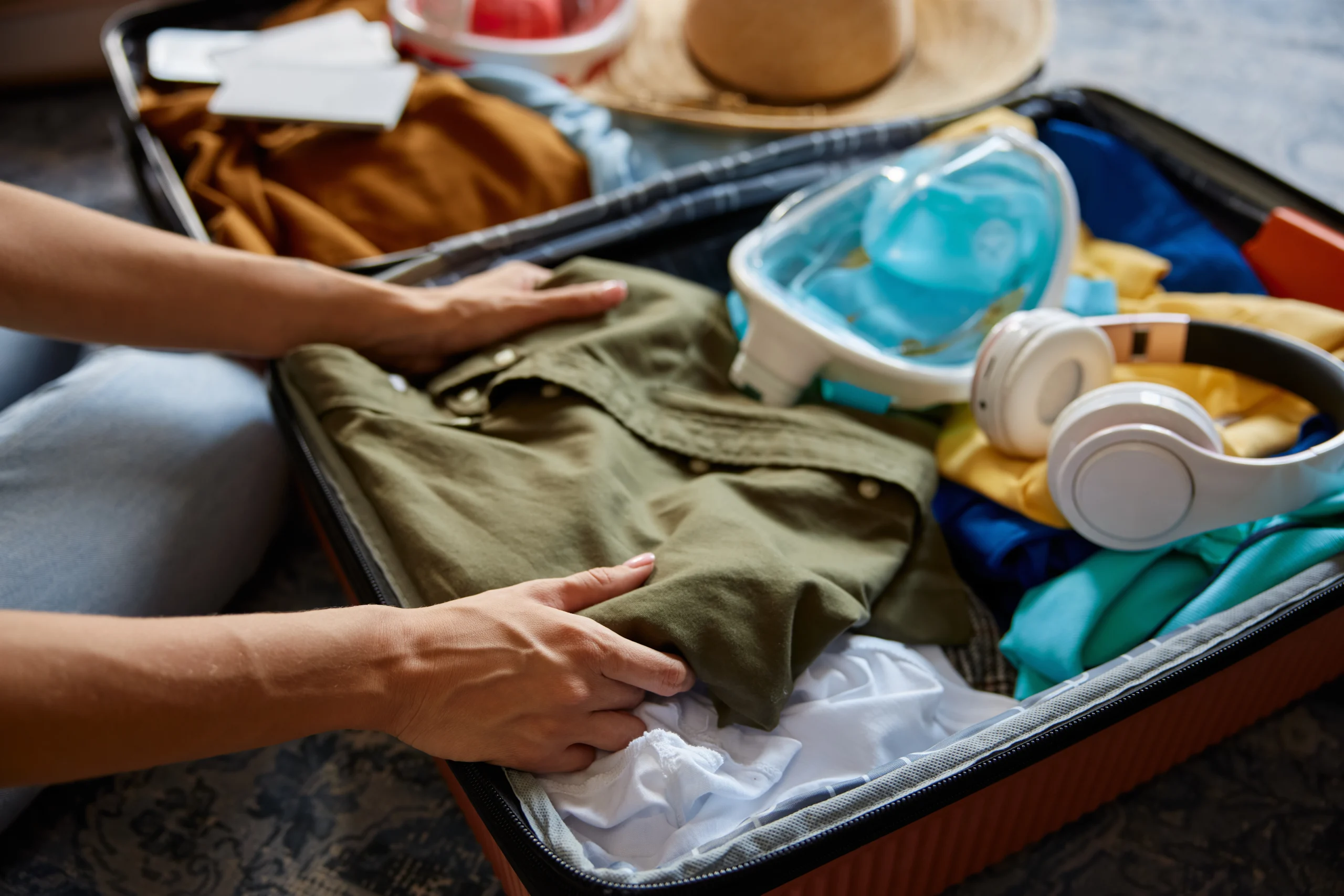When to Start Packing for a Move is one of the most common questions homeowners ask when preparing for a relocation. Moving can be both exciting and overwhelming, and knowing the right time to begin packing is essential for a smooth experience. Planning ahead not only reduces stress but also ensures that your belongings remain safe and organized throughout the process. Whether you’re tackling a small apartment or a large family home, professional advice from experts like Chamomile Go can make all the difference in achieving a seamless move.
Understanding the timing of packing, as well as the right strategies to follow, can transform a potentially chaotic experience into a manageable, even satisfying one. In this guide, we’ll explore the best practices for preparing, organizing, and starting your move efficiently.
Why Timing Matters in Packing

Timing plays a crucial role when preparing for a move. Starting too late can lead to rushed packing, broken or misplaced items, and unnecessary stress. Conversely, starting too early may result in wasted time and cluttered living spaces. That’s why working with experts like Chamomile Go can help you plan effectively and know exactly when to begin. Here are the key reasons why knowing when to start is essential:
- Reduces stress: A planned a
pproach allows you to move at a comfortable pace without last-minute panic.
- Protects your belongings: Proper packing ensures fragile items are well-protected, reducing the risk of damage.
- Streamlines organization: Starting at the right time gives you the chance to declutter and sort items room by room.
- Facilitates professional help: Scheduling packing services in advance, such as packing services Sherman Oaks, becomes easier when you have a clear timeline.
By understanding the balance between early preparation and timely action, you can make the moving process far more efficient.
How to Determine the Best Time to Start Packing
While every move is different, a general guideline is to begin packing four to six weeks before your moving date. This timeline provides ample opportunity to sort, organize, and pack without feeling overwhelmed. Here’s a breakdown:
1. Four to Six Weeks Before the Move
- Start with items you rarely use, like seasonal clothing, books, and decorative items.
- Create a packing inventory to keep track of what is being packed and what still needs attention.
- Gather packing supplies such as boxes, tape, bubble wrap, and markers.
2. Two to Three Weeks Before the Move
- Begin room packing systematically, tackling one area at a time.
- Label boxes clearly with their contents and the room they belong in.
- Disassemble large furniture and prepare appliances for moving.
3. One Week Before the Move
- Pack daily essentials, including toiletries, clothing, and important documents.
- Prepare a “first-night” box with items you’ll need immediately upon arrival at your new home.
- Confirm moving arrangements and schedules with your moving company or relocation specialist.
Best Practices for Packing Efficiently
Packing efficiently is more than just placing items in boxes. It involves strategy, organization, and care to ensure everything reaches your new home safely.
Declutter Before You Pack
- Sort items into three categories: keep, donate, or discard.
- This not only lightens your load but also saves time and money on packing and transport.
Use Proper Packing Techniques
- Wrap fragile items in bubble wrap or packing paper.
- Use sturdy boxes and avoid overloading them to prevent breakage.
- Place heavier items at the bottom of the box and lighter items on top.
Label Everything Clearly
- Include the room name and contents on each box.
- Consider using color-coded labels for faster unpacking.
Pack Smartly by Room
- Focus on packing one room at a time to maintain order.
- Keep daily-use items accessible and packed last.
- For complex items like electronics, keep manuals and cables together in labeled bags.
Tips for Specific Items
Certain items require special attention during a move to prevent damage or loss. Here’s how to handle them:
Kitchen Items
- Use small boxes for heavy items like dishes and cookware.
- Wrap fragile glassware individually.
- Keep spices, pantry items, and appliances organized in labeled boxes.
Clothing and Linens
- Use wardrobe boxes to transport hanging clothes without wrinkling.
- Roll clothes for space efficiency and protection.
- Pack bedding and linens in large, clearly marked boxes.
Electronics
- Take photos of wiring setups for easy reassembly.
- Use original packaging when possible.
- Place small accessories and remote controls in labeled bags.
How Chamomile Go Can Help
Moving can feel like an enormous task, but companies specialize in making the process simpler and more efficient. They provide professional guidance, high-quality packing materials, and experienced staff to ensure your belongings are protected from start to finish. From how to start packing your home to coordinating logistics, their expertise reduces stress and saves valuable time.
Working with professional movers allows you to focus on settling into your new home while they handle the heavy lifting and careful packing. Whether it’s arranging packing services Sherman Oaks or offering advice on the best way to pack for a move.
Common Packing Challenges and Solutions
Even with a solid plan, many people encounter obstacles while packing. Understanding these challenges can help you avoid delays and frustrations:
- Overpacking boxes: Keep box weight manageable and avoid cramming items to prevent damage.
- Lost items: Maintain an inventory list and label boxes thoroughly to track your belongings.
- Fragile items breaking: Wrap delicate items in multiple layers of protection and place them in a dedicated box.
- Procrastination: Stick to a timeline and tackle packing in small, manageable segments.
By anticipating these issues, your moving experience can become smoother and more organized.
Room-by-Room Packing Strategy
A room-by-room approach ensures that your home stays organized and items are easy to locate at your new place.
Living Room
- Pack books, décor, and electronics separately.
- Use padding for fragile items like picture frames and vases.
Bedroom
- Roll clothing and linens to save space.
- Use wardrobe boxes for hanging clothes and personal items.
Kitchen
- Pack dishes, glassware, and cookware securely with padding.
- Consolidate small appliances and kitchen gadgets in labeled boxes.
Bathroom
- Use small boxes for toiletries, cosmetics, and cleaning supplies.
- Seal liquids to prevent spills during the move.
Final Thoughts
Knowing when to start packing for a move can make a significant difference in your moving experience. By planning ahead, organizing systematically, and utilizing the expertise of professionals you can minimize stress and ensure a smooth transition to your new home. Remember to tackle packing one room at a time, label boxes clearly, and safeguard fragile items properly.
For anyone preparing for a move, professional assistance can make the process far less overwhelming. If you need guidance or help with how to pack my house, room packing, or even coordinating packing services Sherman Oaks, don’t hesitate to contact us. Chamomile Go is here to ensure your relocation is as smooth and worry-free as possible.
FAQs
How early should I start packing before a move?
It’s recommended to start packing four to six weeks before your moving date. Begin with non-essential items and gradually move to daily-use items closer to the move.
What is the best way to pack fragile items?
Wrap each fragile item in bubble wrap or packing paper, place them in sturdy boxes, and fill empty spaces with cushioning materials. Clearly label the boxes as “Fragile.”
Can professional movers help with packing services?
Yes, companies offer full packing services, providing materials, expertise, and careful handling to make your move efficient and stress-free.
How can I pack my house efficiently room by room?
Start with one room at a time, packing non-essential items first. Label each box with the room name and contents, and use color-coded labels for easier unpacking. This method keeps your move organized and prevents confusion.
What items should I pack last before moving day?
Daily essentials like toiletries, clothing for the first few days, important documents, and electronics should be packed last. Keeping them accessible ensures you have everything you need immediately after the move.








